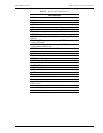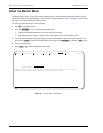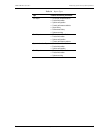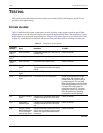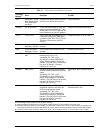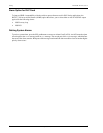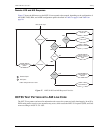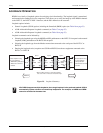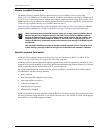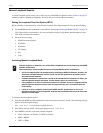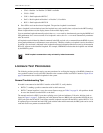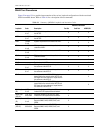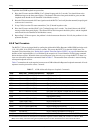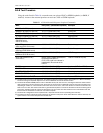
LTPH-UM-1031-03, Issue 3 Testing
H4TU-C-319 List 1 September 12, 2003 47
Generic Loopback Commands
The HDSL4 Generic Loopback (GNLB) commands allow you to use inband codes to loop up either
NLOC (4-in-7) or NREM (3-in-7) towards the network. In addition, these inband codes loop up CREM (6-in-7)
or CLOC (5-in-7) towards the customer. Either loopup condition can be terminated (looped down) with the 3-in-5,
SMJK loopdown code. All inband codes must be present for at least 5 seconds before the HDSL4 system responds.
TLOS is a logic loopback caused by loss of the DS1 input from the CI.
Figure 29 on page 50 summarizes the available loopbacks in the system, and Table 16 summarizes the HDSL4
generic loopback commands. See “GNLB Test Procedures” on page 51 for the test procedures that apply
Special Loopback Commands
A3LB and A5LB loopback commands can be sent by a test set connected to the H4TU-C or H4TU-R. See
Table 17 on page 52 and Table 18 on page 53 for a list of the commands.
A3LB and A5LB are special, addressable, repeater loopback modes which are supported by the H4TU-C. These
loopback modes provide the HDSL4 system with sophisticated maintenance and troubleshooting tools. A3LB and
A5LB are patterned after the Westell addressable T1 repeater loopbacks.
The A5LB loopback selection complies with that proposed for HDSL4 systems in the T1E1.4/92 looopback
recommendation with the following additions:
• Query loopback
• IOR (Intelligent Office Repeater) power-down
• Four loopback time-out choices
• Initiation from either end
• Repeating bit error signatures
• Alternate query loopback
A5LB does not block the arming code from exiting the H4TU-C-319 into the network. Since A5LB never blocks
the arming code from exiting the H4TU-C, the Far-End Activate code is not available in A5LB. A3LB supports
the additional (1-in-6) SMJK loopback command.
HDSL4 systems feature the SmartJack option, which can emulate a Network Interface Device
(NID) for the purpose of loopback testing of the HDSL4 circuit. SMJK and NREM loopbacks
perform the same functions but their initiation differs. SMJK indicates that the loopback was
initiated by the 2-in-5 inband command. NREM, on the other hand, is initiated by the 3-in-7
inband command or by a command issued from the maintenance terminal or the MODE and SEL
pushbuttons.
Use the inband commands to enable or disable the SMJK loopback options. The H4TU-C-319
system setting is normally enabled to recognize all inband SmartJack loopback commands.



